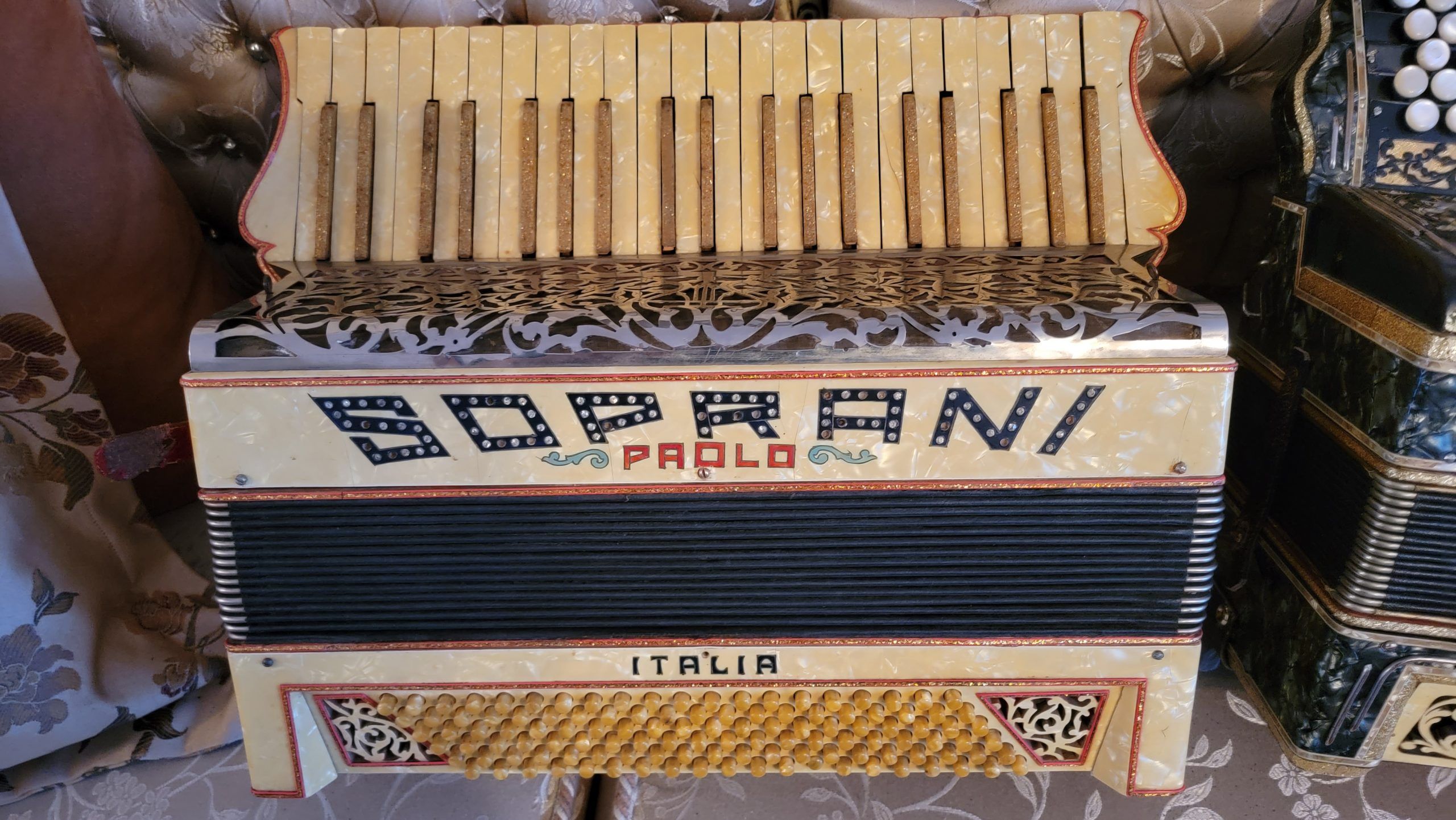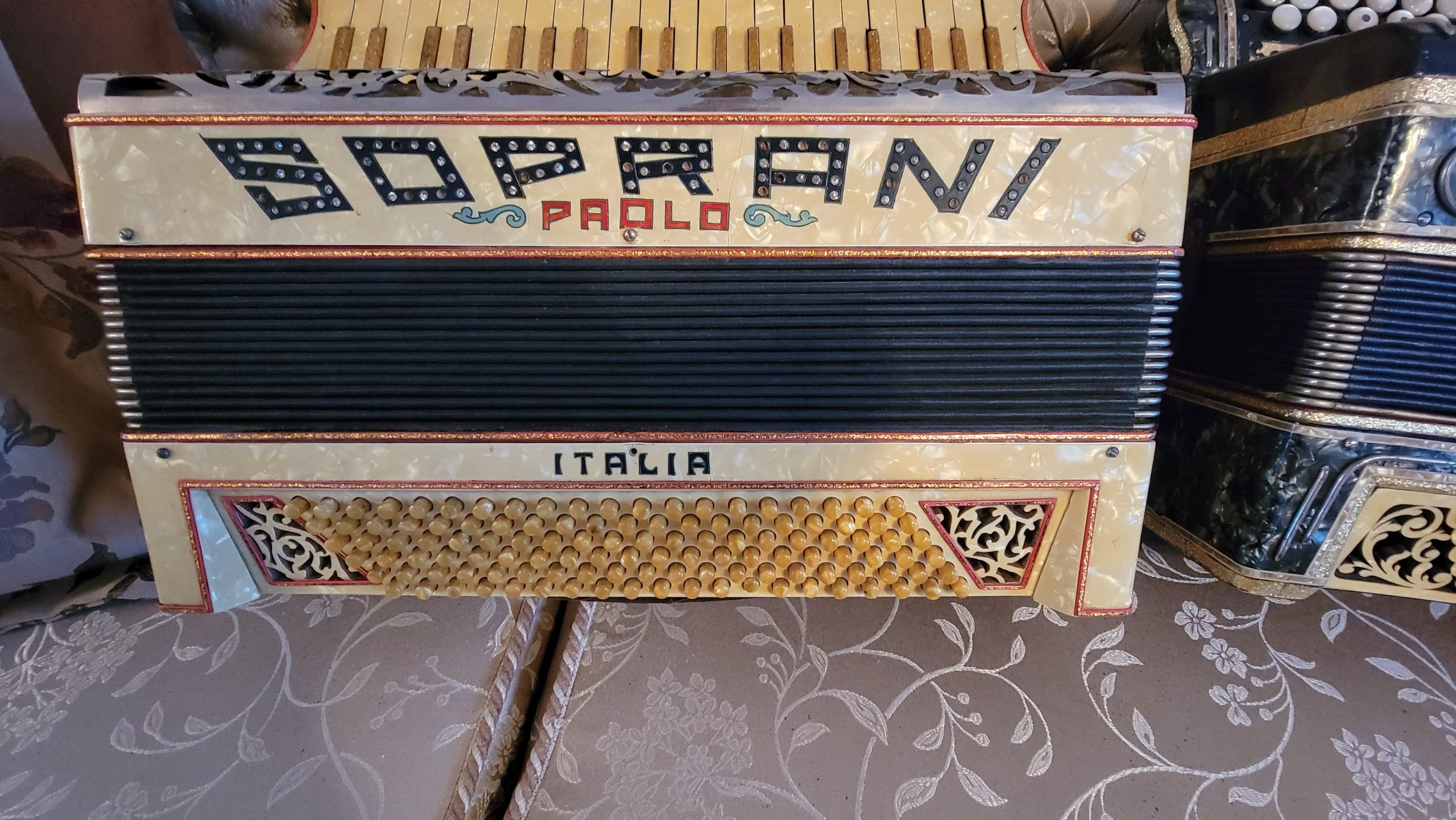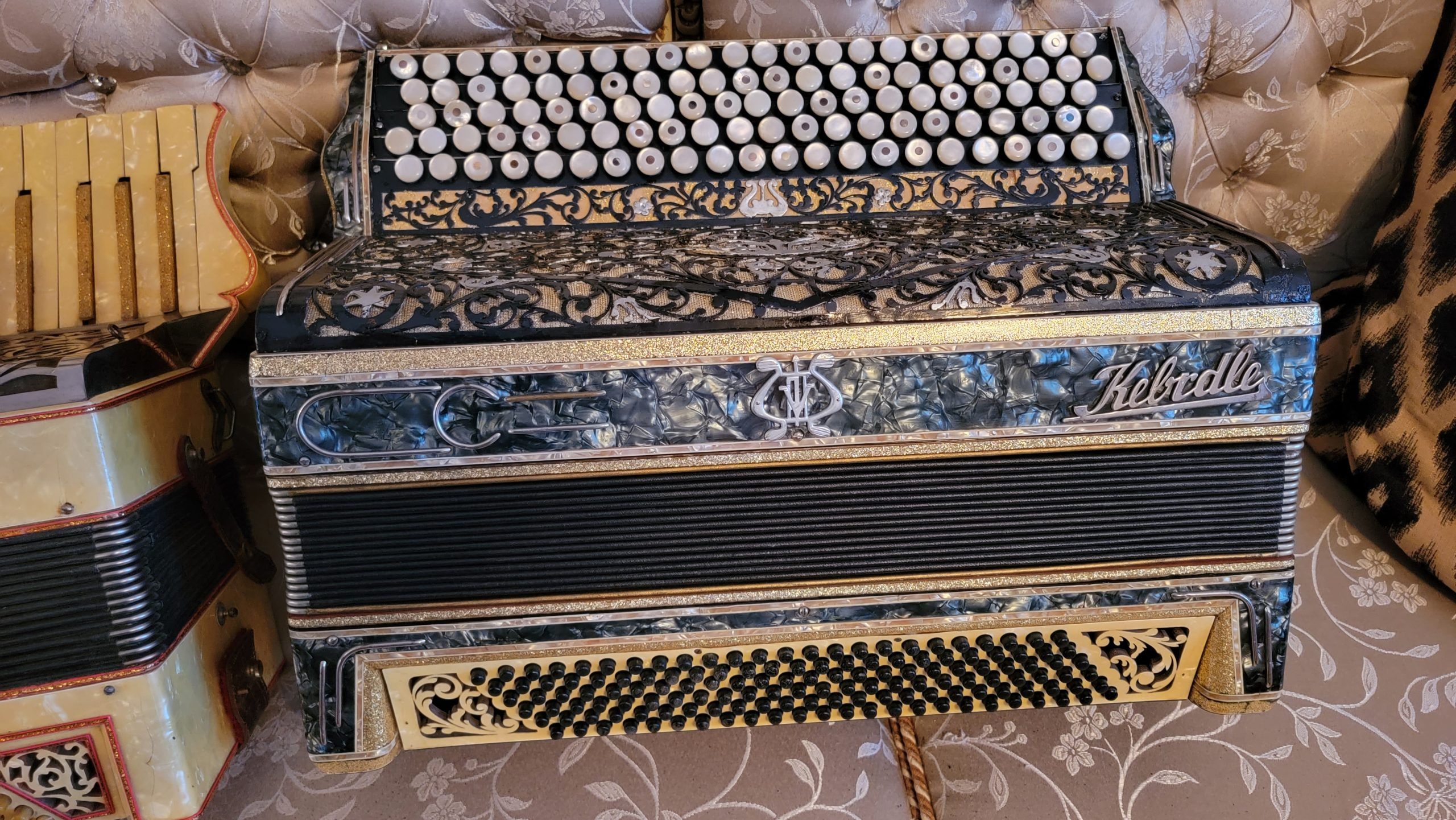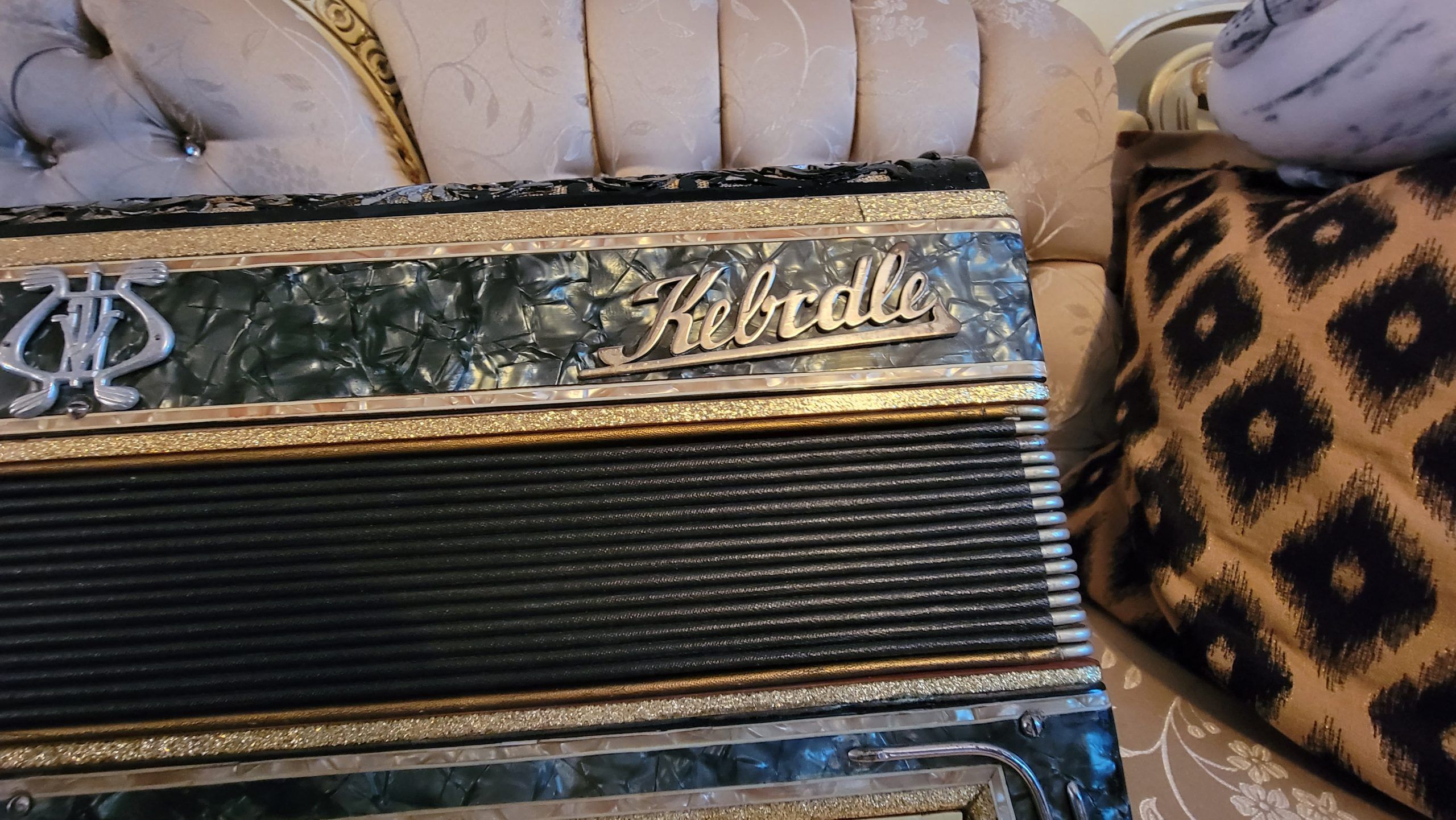November 19, 2022
Today I received not one but two very special gifts. My uncle, who was also an accordionist (only other accordionist in the family on my mother’s side), gave me two accordions that belonged to his father… my grandfather.
Now, really, neither accordion has any great retail value and in the spirit of complete honesty, both are in very rough shape… (one a LOT more than the other), but I value their history and provinence, and I value them because apparently, when my cousin was loading up the accordions to bring them here, there was a bit of a tear in the eye of my uncle. After all, the Kebrdle was in the family for a very long time and the Soprani, with it’s own story, only a couple decades less.
Most people know all about Paolo Soprani accordions. In their day they were the cream of the crop. This is a beautiful 1938 model with ornately carved keyboard ends. This accordion is a bit of a basket case. It has reeds falling out of the reed block on the bass side and the entire treble innards are missing.
It’s had a VERY tough life. I don’t know at what point it lost it’s treble innards, but I’d love to be able to somehow get this one playing one day.


This Kebrdle… a pure citizen of Czechoslovakia, in the time period when that country was under soviet communist rule. Josef Kebrdle (1892-1941), was a native Czech (who’s name this accordion proudly bears) that learned his craft making accordions in Vienna, but then opened shop in the town of Horovice in the then Czechoslovakia (today the Czech Republic).

More specifically, the production of accordions in the Czech Republic began at the end of the 19th century, when there were several small individual accordion workshops in the area. In 1920, Josef Kebrdle and Antonin Kavecka founded an accordion workshop in the small village of Horovice. Horovice is located about 50 km southwest of Prague. Before founding his company, Kebrdle had gained experience in making accordions at Vienna.
The company produced the brand Kebrdle, and the business was small at first. Kebrdle only produced wooden parts for one and two row helikon accordions, and the parts went to accordion companies in Louny and Kraslice for further assembly.

In 1935, the factory had 42 employees, and the factory produced accordions entirely by itself. The great strength of Kebrdle’s work was that he closely followed the development of the accordion elsewhere, especially in Italy. As early as 1927, he began using celluloid to coat the accordion like italians did. Kebrdle also invested in effective advertising that paid off: Czechs actually played domestic accordions. Accordions were also produced for export. The factory produced all types and sizes of accordions which where used during the era. In the 1930s, Kebrdle founded a contest bearing his name. The success of the company was until World War II. When Josef Kebrdle died in 1941, Josef’s brothers Ladislav and Daniel Kebrdle took over the factory .
Global political situation made life challenging, and the factory was nationalized in 1948. The factory was renamed Harmonika Horovice. The Delicia and Lignatone accordion brands manufactured in this factory are well-known. The Lignatone brand was introduced in 1950 and Delicia in 1963. In Finland, these instruments became known especially in the 1960s and 1970s.
In 1957, the company produced the first large concert accordion. The instrument had 5 + 6 voices and had Italian Bugari reeds. Seven accordions of this kind were made.
When the company’s Delicia brand name was registered in 1963, accordions were produced only under this brand name. Production of the Melodia and Rigoletto models began in the 1960s. A prototype of the free bass accordion was also made, but it did not end up in production.
In the early 1970s, the Dina accordion was the factory’s top product. It had Italian reeds and only 50 pieces were produced. In 1975, a light concert version of the accordion was created, which became known as Dineta. About 600 of these were sold. The standard accordion models Carmen, Choral, and Junior were created this decade. (edit by Jerry… the Choral units were available in MIII Free Bass. I have a Czech book that clearly displays several well known accordionists of that area and era clearly displaying a Delicia Choral named accordion with the very distinct MIII system’s 3 extra rows above the Stradella bass system)
In the 1980s was a sharp spike in demand and production. The factory produced up to 30,000 accordions annually. Most of these instruments were exported. When socialism finally collapsed in 1989, the Horovice accordion factory was privatized. It was renamed Bohemia Musico Delicia a.s.. In the 1990s, in addition to its own brands, it manufactured accordions for Hohner and Excelsior.
In 2005, the accordion factory was sold. The new owner was Zdeněk Koutný’s family company Zdeněk Koutný, Akordeon servis. Accordion production continued as normal. In 2017, the name of the factory was changed to Delicia accordions s.r.o. and Stanislava Koutná became the new owner. Production was made more labor-intensive and self-sufficient. The factory produces most of its parts entirely itself and, if possible, purchases the necessary materials from the Czech Republic. 75% of the accordions produced by the company were exported.
2020 was the 100th anniversary of accordion manufacturing in Hořovice, which is why the factory produced new models for the market.
I’ve not experimented with the button accordion yet, but I believe it to be a B-system layout. I wish it was a C-system, having Free Bass in that layout I would have at least been passing familiar with this, and if I ever want to play it, will have to now kind of expand my knowledge on it.